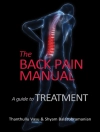Global Handbook on Noncommunicable Diseases and Health Promotion
David V. Mc Queen, editor
A scan of health challenges around the globe readily brings to mind a range of infectious illnesses, from HIV to influenza. Yet chronic non-contagious conditions–heart disease, asthma, diabetes, cancer–are more prevalent, and their rates soaring, across the developed and developing worlds.
The Global Handbook on Noncommunicable Diseases and Health Promotion is an important resource for understanding and approaching chronic illnesses and their prevention. This timely text balances theory and strategies to provide an integrative context for health-affecting behaviors regarding tobacco use, food choices, and physical activity. Coverage expands on current medical/clinical public health perspectives, arguing that closer attention to social context is crucial to better use of health resources and more relevant preventive efforts. Possible roles for hospitals, the workplace, government agencies, NGOs, and other institutions are analyzed, as is the potential for addressing larger underlying health factors (e.g., inequities and poverty) at the societal level. Topics covered include:
- The nature of causality: beyond traditional evidence
- Learning from the social sciences in chronic disease health promotion
- Contextual factors in health and illness
- Understanding and applying a social determinants of health framework for addressing NCDs
- Public health, NCDs, health promotion and business partnering
- NCDs and civil society: a history and a roadmap
As the authors of the Global Handbook on Noncommunicable Diseases and Health Promotion make abundantly clear, opportunities are as numerous as the issues, and researchers and graduate students in global public health, health promotion, and chronic disease epidemiology will find these chapters positive and realistic.p>
Mục lục
Introduction.- Section I: Theoretical and Methodological Issues. – Chapter 1 High-risk vs population prevention strategies for NCDs: Geoffrey Rose revisited in the 21st Century. -Chapter 2: Current and future theoretical foundations for NCDs and health promotion.- Chapter 3: The nature of causality: beyond traditional “evidence”.-Chapter 4: Surveillance for NCDs and Health promotion: an issue of theory and method.- Section II: Lenses for Understanding NCDs.-Chapter 5: Learning from the social sciences in chronic diseases health promotion: Structure, agency and distributive justice.-Chapter 6: Contextual factors in Health and Illness.-Chapter 7: The Social Determinants of Non-Communicable Diseases: A Political Perspective.-Chapter 8:Risk factors:Tobacco.-Chapter 9:Physical Inactivity and Health Promotion: Evidence and Challenges.-Chapter 10: NGOs addressing NCDs through a health promotion lens.-Chapter 11:Health Literacy as a Lens for Understanding Non-Communicable Diseases and Health Promotion.-Chapter 12:From healthy public policy to intersectoral action and health-in-all-policies.- Section III: Approaches to NCDs.-Chapter 13:Population health intervention research: A fundamental science for NCD prevention. -Chapter 14:Planning and management of cross-sectoral programs: strategies to address NCDs.-Chapter 15:The public policy approach: Governments, institutions, welfare states and social justice.- Chapter 16:Accelerating Action on NCDs: Understanding and Applying A Social Determinants of Health Framework for Change.- Chapter 17:Cardiovascular Health, Risk and Disease: Primordial and Remedial Strategies.-Chapter 18:Advocacy strategies to address NCDs: actions to increase the profile of Physical activity.-Chapter 19:Advocacy Strategies to Address NCDs: Tobacco Control.-Chapter 20:Evidence synthesis to inform NCD prevention and health promotion.-Chapter 21:Using evidence to inform NCD prevention and health promotion.-Chapter 22:The health promotionargument: NCDs and public health.-Chapter 23:Public health, NCDs, health promotion and business partnering: benefits, concerns, remedies, and moving towards creative partnering.- Section IV: Institutions and Organizations.-Chapter 24: Framing international trade and chronic disease.- Chapter 25: Addressing NCDs through multilateral engagement at the United Nations: The role of WHO.- Chapter 26:Governance, Policy and Institutions.- Chapter 27:NCDs and Civil Society: A History and a Roadmap.- Chapter 28:Developing health promotion workforce capacity for addressing NCDs.- Chapter 29:Health Promotion for NCDs in and by Hospitals: –A Health Promoting Hospitals.-Conclusion.
Giới thiệu về tác giả
David V. Mc Queen is a global consultant in health promotion, based in Atlanta, GA, USA. and retired from 20 years at the CDC in Atlanta where he served government as Chief of the behavioral risk factor surveillance system (BRFSS), Director of the Division of Adult and Community Health (DACH) and as Associate Director for Global Health Promotion. He has held Professorships on the faculties of the University of Edinburgh, where he directed the Research Unit in Health and Behavioral Change, 1983-1992, and The Johns Hopkins University, SHPH, 1972-1983. He also brings rich NGO experience as a globally elected Board Member of the International Union of Health Promotion and Education as well as serving for 8 years at the Vice President for Science and 4 years as President; he is currently the Immediate past President of IUHPE. He has served on numerous consultancies and committees with the World Bank, WHO, the Canadian Government, as well as other public and private agencies. He bringseditorial experience as a member, present and past, of several editorial boards. He is widely published in academic journals and the author/editor of several books. He is currently an Adjunct Professor in the Department of Behavioral Sciences and Health Education at Emory University in Atlanta.












